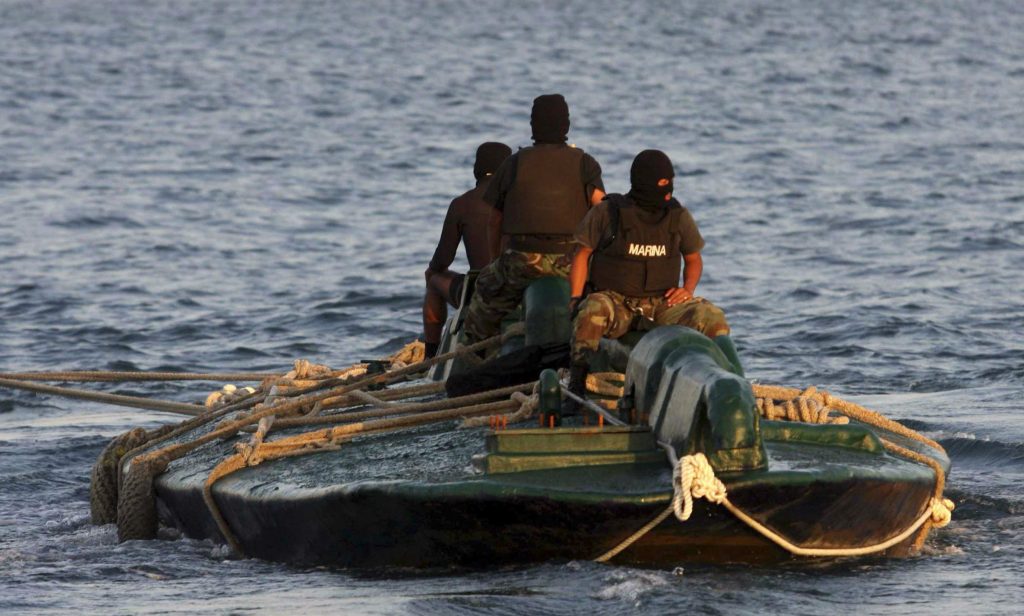Luis Alberto Cruz Hernandez/AP
By
Ricardo Swire
From the advent of transnational Drug Trafficking Organizations (DTOs) Colombia was first to top the list of most violent and sophisticated Drug Cartels worldwide.
The 1970s gave birth to a small cocaine business that matured as a multinational empire. Colombian jungle laboratories processed cocaine for US$1500 per kilogram, the finished product retailing at US$50,000 per kilo.
As technology advanced the younger Colombian DTO lieutenants reverted to smaller, less conspicuous, and more controllable trafficking groups. Responsibilities were compartmentalized, one entity controlled the transportation of coca base from the fields to labs, while another group managed the clandestine jungle laboratories, a dedicated section smuggling finished product from Colombia to Mexico. DTO innovations were adopted when chosen methods reached states of crisis.
Colombian cartels initially preferred to move product by small planes which landed on secret strips in Central America. During the “Miami Vice” era DTOs favored high-speed boats for quick shipment transport. In the early 1990s the Narcosub was born. The unique drug trafficking transportation resource’s creator are technical hands that function inside clandestine workshops in the Buenaventura Jungle. According to local knowledge the heavy foliage area is only accessible by boat.
The twenty-first century electronic connectivity opened doors to global relationship building, Colombian DTOs and Russian mafia or Bratva forged ties. Today they communicate invisibly via World Wide Web portals. Bratva members provide access to Caribbean casinos and offshore banks that Colombian DTOs use for money laundering. Bratva also provides a backdoor to the European drugs market. Colombian DTOs’ complexity and international alliances manifested in Colombian National Police (CNP) evidence of a Russian designed Narcosub.
Three Russian technical experts were based at a Facatativa village warehouse, skirting the Andean mountains. Colombian national security intelligence reports generated a CNP predawn raid. Deployed law enforcement operatives found that the Facatativa warehouse operation facilitated construction of a one hundred foot Narcosub. Russian tools and manuals, written in Russian using the Latin instead of Cyrillic alphabet, were also found.
Four years ago a US Navy Rear Admiral, performing duties of Joint Inter Agency Task Force (JIATF) South Director, reported that five Self Propelled Semi Submersibles (SPSS) were stopped in the Western Caribbean. Each carried six point five metric tons of cocaine. Two hundred and fourteen other SPSS were also detected, forty-five were stopped. The unique Narcosub’s profile below the ocean surface, coupled with its fiberglass and lead construction, makes the watercraft difficult to detect with infrared technology.
Thirty-two percent of cocaine shipped, between Latin America and the US mainland, is carried by Narcosub. A US Foreign Military Studies Office (FSMO) report substantiated Narcosub operations. The document noted eighty percent of landed US drugs were transported via water routes, thirty percent ferried by Narcosubs. One intercepted cocaine cargo weighed 7.5 tons.
Colombian DTOs use of technological cleverness is further demonstrated by smuggling techniques. In 2013 a Canadian drug mule, working for a Colombian DTO, chanced a fake pregnant belly made of latex and filled with cocaine. In 2014 approximately seven hundred suspect drug parcels were reported at Bogota’s cargo airport. The suspicious objects included an oscilloscope, computers, an aquarium, magazines, children’s books, a prosthetic leg, one mirror, coffee and sandwiches.
US Drug Enforcement Administration (DEA), together with the CNP, monitor more than three hundred active DTOs in Colombia. Modern Colombian DTOs control huge amounts of capital, high value assets and state-of-the-art smuggling equipment. CNP intelligence noted domestic DTOs’ preferred use of scientifically engineered liquid cocaine for smuggling, over the powdered substance. Colombian DTO’s female drug mules each transport cocaine via a small incision on their thigh, or inside surgical breast implants.
Colombian DTO’s ingenuity was demonstrated on October 23rd 2016 when Colombian Navy divers recovered 73 kilos of cocaine hidden underwater. The US$2,555,000 drug stash was concealed in eight watertight parcels attached to a sailboat named “Solar Storm.” One kilo of cocaine is valued US$35,000 on the streets. Captained by a Lithuanian national the Panamanian registered sailboat made its port of call at Baru Island on Cartagena’s Caribbean coast. Lead weights, attached to the waterproofed packages, stopped the drug consignment from prematurely floating to the ocean surface. The Panamanian sailing vessel was impounded and its Captain detained.



No Comments Yet!
You can be first to comment this post!